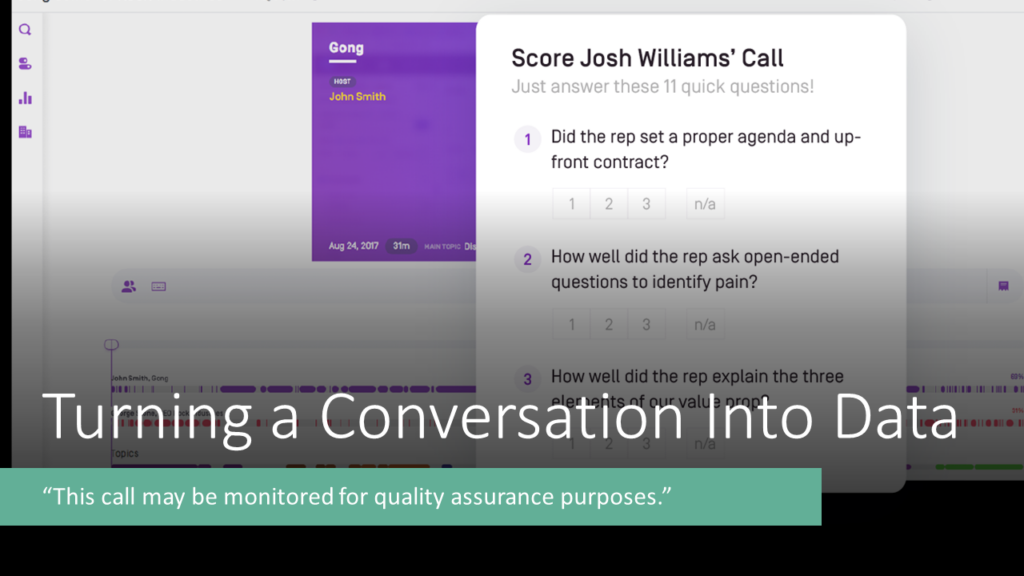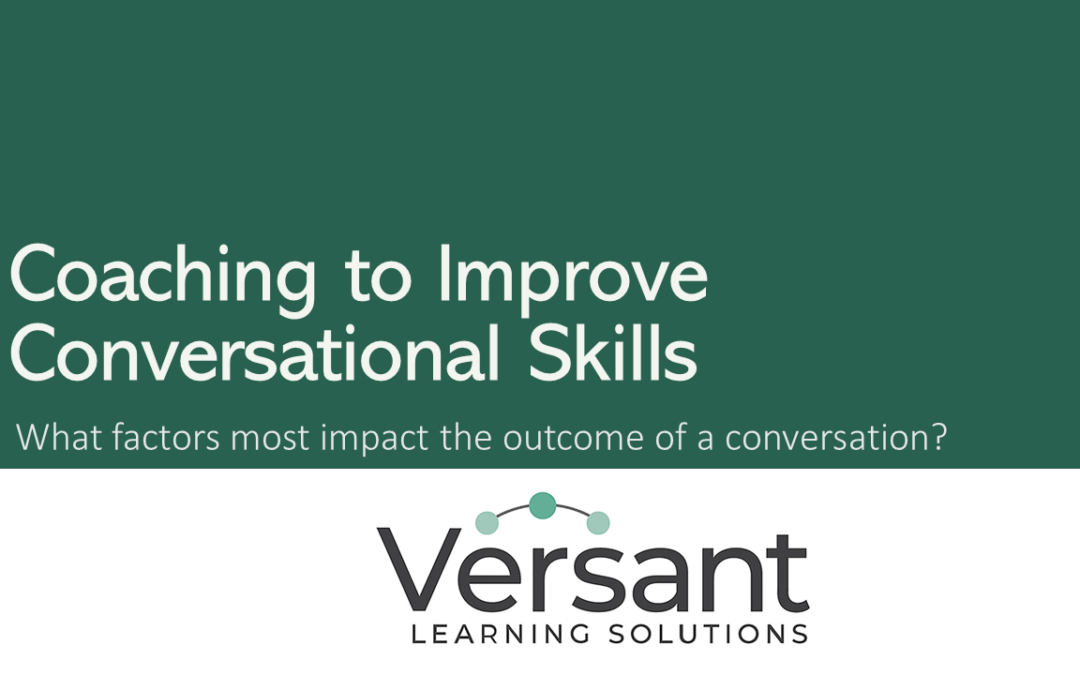Overall Training Challenge
One of the workshops most frequently requested by Medical Affairs teams is some version of “Building Rapport with KOLs” or “Developing Long-Term KOL Relationships.” In those workshops, we start with the building blocks of genuine, engaging, bi-directional conversations that organically lead to future interactions. All new relationships build on communication – the conversations you have with a person that transforms them from a stranger into a colleague or friend.
You know a good conversationalist when you meet one. They are interesting and you find it easy to talk to them. Maybe you are one of these people and are often told, “I always look forward to talking to you!” or “Time flies when we’re talking!” So, what makes someone a good conversationalist? Most skilled conversationalists will admit that they don’t know what they do that makes their conversations stand out. Furthermore, they don’t know how to teach someone else to improve their conversational skills. The question becomes, how do you coach someone (or yourself) to become a better conversationalist?
This blog will discuss two techniques that will improve your conversational skills, whether you’re already a naturally good conversationalist or looking to improve those skills.
What Factors Truly Make a Difference During a Conversation?
A large and increasing body of research has taken advantage of the customer service recordings collected by thousands of companies globally. Those are the calls that start with, “This call may be monitored for quality assurance purposes.” While the companies rarely listen to their recordings, researchers have used them to analyze patterns in conversations and those conversations’ outcomes.

Conversations can be evaluated for:
- Percent talk time for each person
- Number of questions asked
- Types of questions asked (new vs. follow-up, open-ended vs. close-ended)
- Words used most or least frequently
- Length of pauses/silence
- Number of interruptions
- Cadence and pace of speech
Examples of outcomes of a conversation are:
- Did the representative make the sale?
- Was the inmate granted parole at their hearing?
- Did one person agree to go out on a date with the other following a 5-minute “speed-dating” conversation?
- Was the physician’s diagnosis of a patient’s complaint correct?
#1: Talking vs. Listening
Artificial intelligence (AI) programs analyzed millions of conversations and determined that the person initiating the conversation should be speaking, on average, 46% of the time. So, if you’re the MSL sitting in a KOL’s office (or looking at them on a computer screen), you should be speaking less often than they are.

The problematic part is that the MSL typically requests the meeting and thus feels obligated to lead the conversation. Additionally, if the KOL is not a talker or the MSL has data to share, the MSL’s tendency to talk for the majority of the time becomes almost unavoidable.
That’s where #2 becomes helpful.

#2: Questions
As with the ideal percentage of talk time, AI analysis determined that, in a 30-minute conversation, the ideal number of questions is lucky number 13, not more, not less. If you ask 14 questions, people lose their patience. If you ask 12 questions, it suggests you’re talking too much. Now, take all this with a grain of salt. This number is based on specific data sets, algorithms, and analyses. What is more generalizable about this result is that if you’re only asking 5 or 6 questions during a KOL meeting, that’s probably too few.

When digging deeper into how questions impact the outcomes of conversations, researchers found that:
- The number of questions asked correlated with the outcome of a conversation (i.e., more questions led to a successful outcome more often)
- The person’s gender did not influence the positive impact of asking questions – it was equally beneficial to men and women
- Follow-up questions were significantly more impactful than new questions
Why are follow-up questions better than new questions? They demonstrate that you are listening (because you asked a question related to what the person was saying), and that you find what the person is saying interesting enough that you want to know more.
What is the Value to Medical Affairs?
Medical Affairs is the conduit for communication between the company and its customers. The more successful the team is at this, the more value it brings to the organization. Both MSLs and MSL leadership want to have a relationship with KOLs where they can pick up the phone and have a quick conversation when needed. That takes time and many successful conversations to achieve.
Coaching to Improve
As with any skill, practice is essential for improvement. However, improving conversational skills by simply having more conversations is not the same thing as practice. Here are two strategies to help you practice the two new techniques discussed above:
1. Record your conversation and “score” it
Use a smart device to record a conversation (virtual meeting, phone call, face-to-face interaction, etc.) with a KOL, colleague, friend, or family member. It’s important to stress that this is for your personal use only, and you should be sensitive about privacy issues. Posting the results or sharing the recording (without the other party’s knowledge/permission) is not part of this exercise. The recording is for your private data gathering and should be deleted after you assess your performance.
Data points to capture:
- Number of questions you asked
- Number of follow-up questions versus new questions
- A rough estimate of the amount of time you spent talking vs. talk time of the other person
- The longest duration you spoke without interruption (aka monologuing)
- The longest duration the other person spoke uninterrupted
2. Managers – observe your direct report’s field meeting and “score” it
Managers can provide feedback after a ride-along or virtual meeting. Providing direction during a field meeting can be distracting and if the input is negative, demoralizing.
In addition to the data points listed above, managers can also provide feedback about:
- Phrases or wording that had a positive (or negative) impact on the conversation
- The types of questions asked – open-ended (good) and follow-up (also good)
- Non-verbal behaviors such as body language and facial expressions
- Behaviors to work on – like interrupting, active listening (or lack of), and monologuing
One final thought: do you need to rely on or wait for a manager to provide you with this type of conversational coaching? No! You can ask a peer, trusted friend, or family member to observe you in conversation and assess the characteristics and patterns described above. Anyone can be a coach, and anyone can be a student!
If you would like to discuss your team’s training needs – please contact us.
References
Harford, Tim. The Data Detective. Riverhead Books, February 2, 2021.

